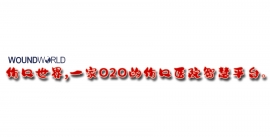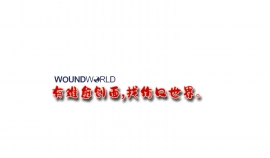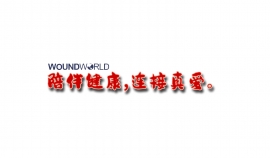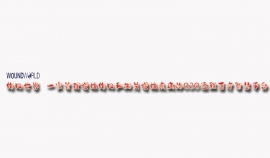文献精选
张家盛 1,3,吴刚 2 ,邱江 1
1 中山大学附属第一医院,广东 广州 510000
2 华南理工大学 材料科学与工程学院,广东 广州 510000
3 广州华越肾科再生医学科技有限公司,广东 广州 510000
张家盛, 吴刚, 邱江. 组织工程中细胞与生物材料相互作用研究进展. 生物工程学报, 2021, 37(8): 2668-2677.
Zhang JS, Wu G, Qiu J. Interactions between cells and biomaterials in tissue engineering: a review. Chin J Biotech, 2021, 37(8):
2668-2677.
摘 要: 种子细胞、生物材料和生长因子是组织工程三要素。生物材料模拟体内细胞外基质,为细胞提供良好的生长附着环境,维持细胞的活力和功能。材料表面的理化性质和表面改性分子直接影响细胞的粘附、增殖、迁移和分化等细胞行为,进而影响细胞功能和组织再生效果。材料表面修饰分子是细胞表面粘附和生长的直接接触位置,因此细胞与生物材料表面修饰分子的相互作用是组织工程的关键。文中重点介绍表面修饰分子对细胞表型及功能的影响,为组织工程关键问题的研究提供参考。
关键词: 细胞外基质,整合素,表面修饰,机械转导,干细胞,生长因子
Interactions between cells and biomaterials in tissue engineering: a review Jiasheng Zhang1,3, Gang Wu2 , and Jiang Qiu1
1 The First Affiliated Hospital of Sun Yat-sen University, Guangzhou 510000, Guangdong, China
2 School of Materials Science and Engineering, South China University of Technology, Guangzhou 510000, Guangdong, China
3 Asia Kidney Regenerative Medicine Technology Limited, Guangzhou 510000, Guangdong, China
Abstract: Seed cells, biomaterials and growth factors are three important aspects in tissue engineering. Biomaterials mimic extra cellular matrix in vivo, providing a sound environment for cells to grow and attach, so as to maintain cell viability and function. The physicochemical properties and modification molecules of material surface mediate cell behaviors like cell adhesion, proliferation, migration and differentiation, which in turn affect cellular function and tissue regeneration efficacy. Furthermore, the modification molecules of material surface are the direct contact point for cell adhesion and growth. Therefore, the interactions between cells and surface modification molecules are the key to tissue engineering. This review summarizes the effects of surface modification molecules on cell phenotypes and functions.
Keywords: extra cellular matrix, integrin, surface modification, mechanotransduction, stem cell, growth factor
Received: September 23, 2020;
Accepted: March 16, 2021
Supported by: Natural Science Foundation of Guangdong Province, China (No. 2016A030313190).
Corresponding author: Jiang Qiu. Tel: +86-20-87338278; E-mail: 该Email地址已收到反垃圾邮件插件保护。要显示它您需要在浏览器中启用JavaScript。
广东省自然科学基金 (No. 2016A030313190) 资助。
中华医学会皮肤性病学分会皮肤激光医疗美容学组
中华医学会皮肤激光技术应用研究中心
中国医师协会美容与整形医师分会激光学组
中华医学会医学美学与美容学分会激光美容学组、皮肤美容学组
[ 关键词 ] 射频,医用 ;皮肤美容治疗 ;共识
[ 中图分类号 ] R454.1;R751.05 [ 文献标识码 ] A [ 文章编号 ] 1674-1293(2021)04-0193-05
DOI:10.11786/sypfbxzz.1674-1293.20210401
执笔人 :杨蓉娅(中国人民解放军总医院第七医学中心),尹锐(陆军军医大学第一附属医院)
参与共识起草专家名单(以姓氏笔画为序):
尹恒(卓正医疗);尹锐(陆军军医大学第一附属医院);卢忠(上海复旦大学附属华山医院);刘红梅(北京梅颜医疗美容诊所);刘丽红(卓正医疗);李凯(第四军医大学西京医院);严淑贤(上海复旦大学附属华山医院);李雪莉(河南省人民医院);杨蓉娅(解放军总医院第七医学中心);陈瑾(重庆医科大学附属第一医院皮肤科);林彤(中国医学科学院皮肤病医院);苑凯华(广州紫馨医疗美容医院);赵小忠(北京小忠丽格医疗美容门诊部);夏志宽(解放军总医院第七医学中心);高琳(第四军医大学西京医院);董继英(上海交通大学医学院附属第九人民医院);简丹(中南大学湘雅医院);蔡宏(空军特色医学中心)
通讯作者 :杨蓉娅,E-mail:该Email地址已收到反垃圾邮件插件保护。要显示它您需要在浏览器中启用JavaScript。
马必委,黄玉环,林豪,潘钦关
(苍南县第二人民医院,浙江325802)
【摘要】
目的
比较微针围刺配合氨甲环酸与单纯口服氨甲环酸治疗黄褐斑的疗效差异。方法将60例女性黄褐斑患者随机分为治疗组和对照组。每组30例。治疗组采用微针围刺配合氨甲环酸治疗,对照组采用单纯口服氨甲环酸治疗。连续治疗4个月后评定疗效。结果治疗组总有效率为96.7%,对照组为73.3%,两组比较差异具有统计学意义(P<O.05)。结论微针围刺配合氨甲环酸是一种治疗黄褐斑的有效方法。
【关键词】
针刺疗法:黄褐斑:围刺:氨甲环酸:针药并用
【中图分类号】R246.7
【文献标志码】A
DOI:10.13460/j.issn.i005—0957.2014.05.0433
Therapeutie Observation of Surround Acupuncture with Micro-needles plus Tranexamic Acid for Chloasma MA Bi-weiHUANG Yu-huan, LIN Hao, PAN Qin-guan. The Second People's Hospital ofCangnan,Zhejiang 325802,China
Abstractl Objective To compare the therapeutic efficacies of surround acupuncture with micro-needles plus Tranexamic Acidand single oral administration of Tranexamic Acid in treating chloasma.
Method Sixty female patients with chloasma wererandomized into a treatment group and a control group, 30 in each group. The treatment group was intervened by surroundacupuncture with micro-needles plus Tranexamic Acid, while the control group was only by oral administration of Tranexamic AcidThe therapeutic eficacies were evaluated after successive 4-month treatments.
Result The total efiective rate was 96.7% in thetreatment group versus 73.3% in the control group, and the difference was statistically significant (P<0.05). Conclusion Surroundacupuncture with micro-needles plus Tranexamic Acid is an effective approach in treating chloasma.
【Key words】Acupuncture therapy, Chloasma, Surround acupuncture, Tranexamic Acid; Acupuncture medication combined
唐华明 1 ,美合日阿依 1 ,张成英 2 ,周 杰 2 ,李 超 2(1. 伊丽莎白整形美容医院,新疆 乌鲁木齐,830001;2. 天使之翼整形美容医院,四川 成都,610017 )
【摘 要】 目的 评价氨甲环酸、谷胱甘肽不同给药方式用于治疗黄褐斑的临床效果。方法 从 2018 年 8 月 -2019 年 8 月,选择 MLA 分级 黄褐斑患者 117 例,随机分为微针组(A 组)、皮内组(B 组)和联合组(C 组)各 39 例;谷胱甘肽和氨甲环酸注射液分别采用不同方式:A组微针导入,B组皮内注射,C组联合方式给药。结果 C组患者各观察点的治疗效果明显优于 A、B 组(P 均〈0.05),各组患者不良反应发生率无明显差异。结论 谷胱甘肽和氨甲环酸注射液可有效治疗黄褐斑,联合给药方式优于单独给药。
【关键词】微针 皮内注射 氨甲环酸 谷胱甘肽 黄褐斑
DOI:10.19593/j.issn.2095-0721.2020.01.013
Observation on the efficacy of microacupuncture and intradermal injection of tranexamic acid and glutathione in the treatment of chloasma TANG Hua-ming1 , MEIHERIAYI1 , ZHANG Cheng-ying2 , ZHOU Jie2 , LI Chao2 (1.Urumqi Elizabeth plastic surgery hospital, Xinjiang Uygur Autonomous region, 830001, China; 2. Angel Wing plastic surgery and Beauty Hospital, Sichuan Province, 610017, China)
[ABSTRACT] Objective To evaluate the clinical effect of tranexamic acid and glutathione in the treatment of chloasma.
Methods From August 2018 to August 2019, 117 patients with mla-graded chloasma were selected and randomly divided into the microneedle group (group A), intradermal group (group B) and combined group (group C), 39cases each. Glutathione injection and tranexamic acid injection were administered by microneedle in group A, intradermal injection in group B and combined administration in group C, respectively.
Results The treatment effect of each observation point of patients in group C was significantly better than that of group A and group B (P < 0.05), and there was no significant difference in the incidence of adverse reactions in each group.
Conclusion
Glutathione and tranexamic acid injection can effectively treat chloasma.
[KEY WORDS] Microneedle; intradermal; injection of tranexamic; acid glutathione; chloasma




